I’ve moved country a fair number of times and had to bring my teaching supplies with me. I started collecting my own supplies when I taught in NYC, and my collection has grown over the years. What follows are some of the essential tools I use when teaching middle school and high school mathematics.
A graphing calculator
These devices let students quickly generate graphs, do calculations on lists of numbers, and a huge amount of other mathematical operations. I tend to focus on the things we can do with the mathematics we know, and treat mathematical calculations as tools for solving problems. As far as I know, so far no single computer program is as easy to use and does as much as the modern graphing calculator.
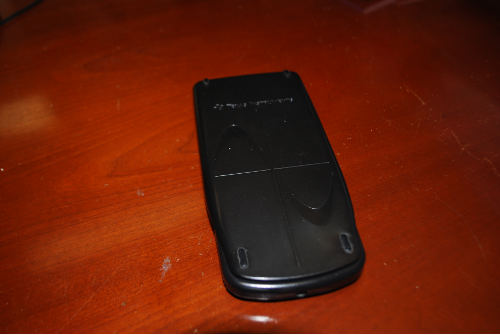
Decks of cards
You can use these in probability simulations, learning mathematical card games and tricks, or just choosing which group is going to present next.
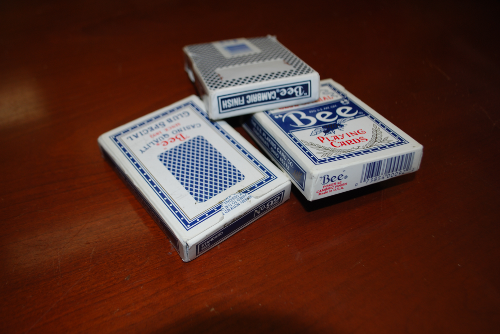
Dice
We use dice for more probability simulations, choosing partners for groups (occasionally, I usually let students choose their own group members), and playing board games. Yes, we play games in math class.
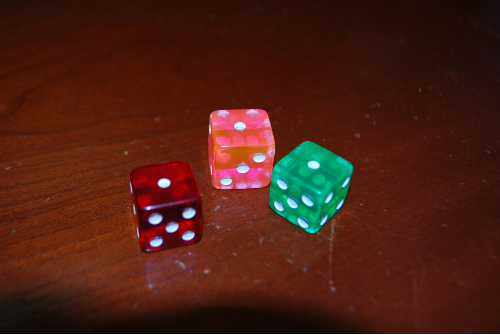
String
Whether you are using the string as a tool for more interesting mathematical phenomena (like pendulum motion), using it to tie parts of a project together, or studying the pattern of knots tied in the string, this is an invaluable tool in mathematics class.
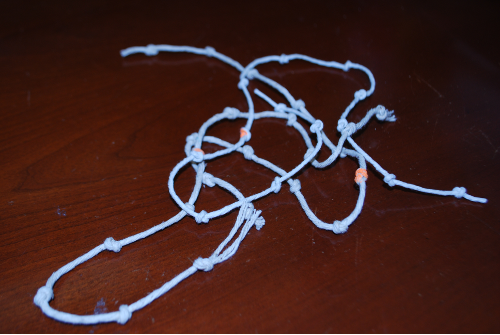
Scissors and rulers
I have a class set of these very useful devices. Being able to construct models from shapes cut out of paper helps bring mathematics alive for students.
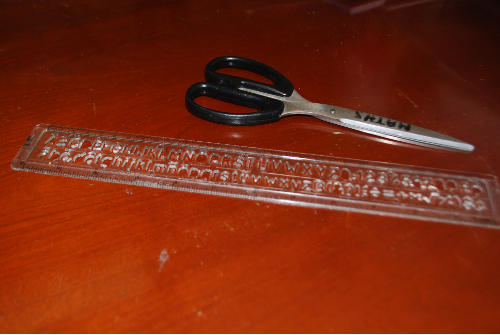
Compass and protractor
I also have a class set of a compass and protractor. I ask students to buy one of each of these things as part of their supplies for class, but provide them for students as well. I don’t want my lesson floundering because some 13 year old forgot his supplies for class…

Golf (and other similarly bouncy) balls
You can bounce them, roll them down inclines, and throw them through the air. All of these result in interesting mathematical models for students to inspect and analyze.
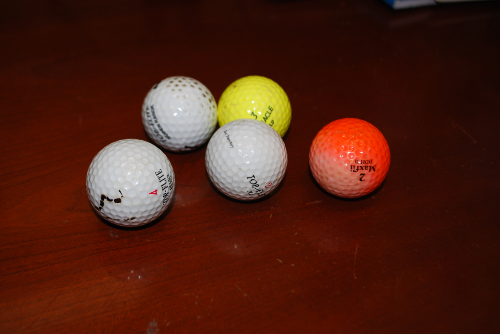
Beads
These are great for counting, using as markers, keeping track of positions of frogs jumping past each other on lily pads, and loads of uses I haven’t even thought of yet.
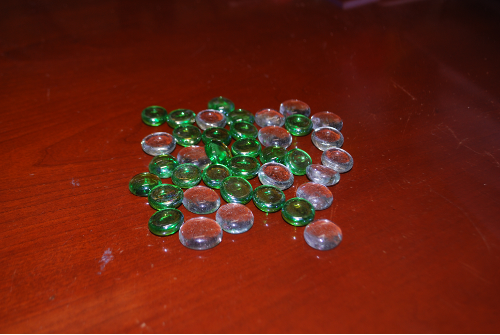
Long measuring tape
I have 8 of these. At one point I had 10, but they are such an incredibly useful device, they sometimes go missing. I use these to test the Pythagorean theorem out on the soccer field, or apply trigonometry to finding heights of things, to testing that our measures of distances using parallax are accurate. I can’t imagine not having these measuring tapes, they’ve been to 4 different countries with me. When my wife (while we were packing for Thailand) asked me if I really needed these, I just gave her the most incredulous look. Of course!
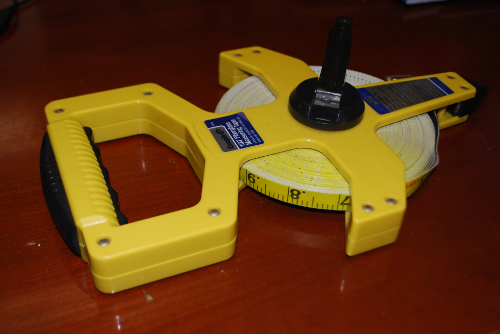
Paper clips
It’s amazing what you can do with paperclips if you see them as something other than a paper clip. Sure, I use them to hold pieces of paper together, but I have also used them to pick locks on filing cabinets when the key went missing with the previous teacher, construct 3d models, and twist into interesting mathematical shapes.
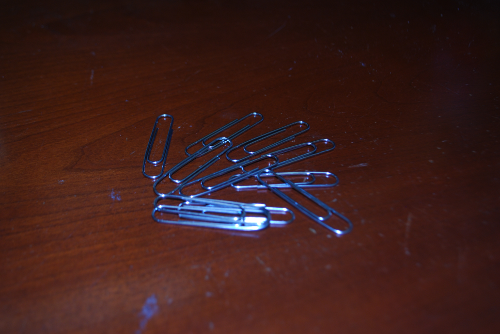
iPhone (video camera)
I love the fact I always have a regular camera and a video camera on me at all times. It also doubles as a way to retrieve information from the Internet which is handy when having a discussion where you really want to be right. Being able to capture moments from my classroom as they happen is awesome.

My laptop
I’ve had access to a computer in my teaching since the very beginning, and I wouldn’t have it any other way. I used it at first for research for lesson ideas, and for collecting resources for class, but am now using it to connect to other mathematics teachers from our global community. The fact it also includes Google Apps, Geogebra, video and image editing, and a host of other applications is just bonus.
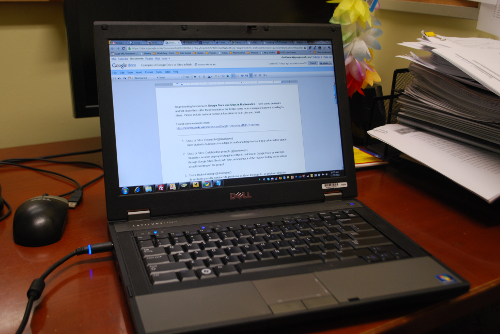
What essential tools are in your teaching kit?
Evan Ryder says:
I am learning about a math teacher and I used your website to get information. Thanks.
April 18, 2019 — 6:13 pm
Terika says:
What are some great measuring tools for a math assessment kther than a ruler or protractor
May 6, 2021 — 5:44 pm
Katherine Burford says:
Consider teaching children how to make homemade clinometers,
https://www.youtube.com/watch?v=QVe4CMhCX74
Clinometer
https://www.google.com/search?q=how+to+make+a+homemade+clinometer&rlz=1CAHKDC_enUS825&oq=how+to+make+a+homemade+clinom&aqs=chrome.0.0i512j69i57j0i22i30l2j0i390.12036j0j15&sourceid=chrome&ie=UTF-8
Astrolabe
https://uaf.edu/museum/education/educators/heliophysics-aurora-outre/activities/pdfs/Make-An-Astrolabe-Activity.
Hypsometer
https://www.youtube.com/watch?v=4zMVXSzBEW4
Bringing children outside and helping them connect math with nature is an incentive to learn math.
Thanks for the video. As an adult I am trying to relearn math through the khan academy using the explicit instruction method. As a child and throughout my life I’ve found it difficult to understand math based on only a couple of examples. Actually having a detailed explanation that I can follow would only enhance my ability to figure it out. Rather than casting students aside who can’t figure it out, why not let them have textbooks that walk them through some of the problems. I can’t find an explicit type textbook for adults that goes through basic math, not just pedagogical theory. Do you know of such a book and/or software? I like “Two Trains Leave Paris” by Taylor Marie Frey and Mike Wesolowski. It would never be approved by the Texas School Book purchasing people (who often control the nation’s textbook purchases, as you know) but that romantic and adventurous approach would be perfect for non-math major college students in a remedial program. Sometimes I think Euclid’s work itself ought to be studied because it is so pictorial. Have a lovely day. Katherine Burford
May 15, 2022 — 2:05 pm